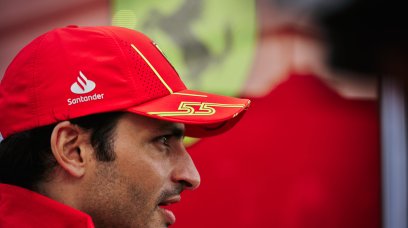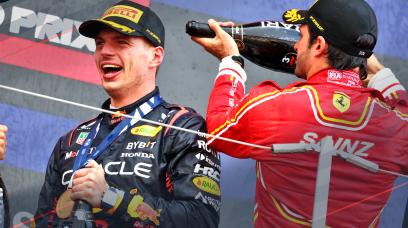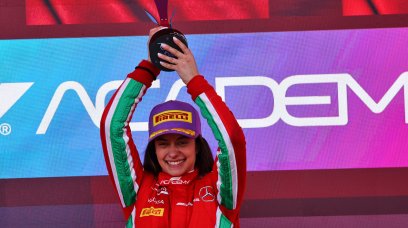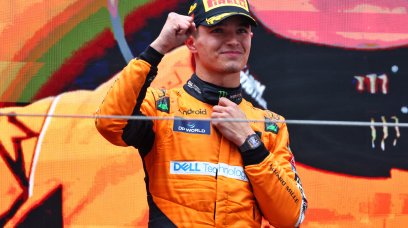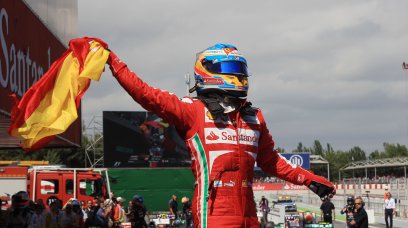In the second part of Dieter Rencken's 2022 chats with Red Bull Chief Technical Officer Adrian Newey, the Briton discusses the ambitious RB17 hypercar project Part one of Dieter Rencken's conversations with Adrian Newey, where he discussed the technical challenges surrounding their 2022 car, can be found here .
Newey on the Red Bull RB17 hypercar
DR: You’re a Formula 1 engineer, yet RB17 is aimed at a non-racer niche. Is there a personal connection? AN: I've sketched road cars since I was at university. My first and foremost passion is racing, but I've always had an interest in road cars which morphed into the [2010] PlayStation X1. From there we entered into a partnership with Aston Martin to develop Valkyrie, which was designed first and foremost as a road car. It was a very fruitful partnership, but - by definition - we had to agree on common ground. [RB17] is conceived purely as a Red Bull car where we are clearly our own masters, and it's conceived first and foremost as a track car. To follow on from Valkyrie and be involved in something which is the next step, but as a two-seat [track] car is really exciting. I love the conception of the car and trying to get the overall package together. It's a similar challenge yet a very different challenge to [designing] a single seat Formula 1 car.
DR: What is the market niche? AN: We've had lots of interest over the years from people who said, ‘What's it like to drive a Formula 1 car?’ The reality at the moment is there is nothing as quick as a Formula 1 car, not even close to [it]. The only way to find out is to drive a Formula 1 car, and that is an extremely difficult thing to do and it needs a lot of support. It started me thinking: How about we develop a two-seat car that's capable of Formula 1 performance levels, but that somebody can develop and drive themselves, and if they wish take a passenger or a [driver] coach. At the same time, there's also a rise in track day events. DR: Formula 1 cars are open-wheeler and -cockpit cars, whereas this is closed on both fronts… AN: Accommodating two people forces you into a wider chassis, which creates packaging challenges [as] you've lost width for radiators, you've lost width for the aerodynamic shape which you then have to recover. Closed wheels and roof enhance the aerodynamics and although they cost a small amount of weight they make safety easier to package. X1 was designed as the ultimate no-rules Formula 1 car and that was closed.
DR: You’ve spent much of your life working under F1 constraints. When last did you follow your instincts? AN: Valkyrie was done by Red Bull and myself, then we teamed with Aston Martin and suddenly there’s another group with input - no bad thing, but another input. There’s always been a rule book [in the past] and I think that's what's exciting about this project: There are lots of considerations including occupant safety and clearly the car has to obey the laws of physics, but there's no fundamental rulebook we have to work to. The challenge really became: How can we manage to design a car that has circa Formula 1 levels of performance but is comfortable, has two seats, is a track car. That’s really where the design specification started to evolve from. I’ve thrown most of the things that I've learned over the years and Formula 1 into achieving that [smile]. DR: Such as… AN: It will be a skirted car, so flexible skirts - because we can – and clearly large ground effect tunnels, active suspension as it could be driven on circuits that aren't as smooth as [F1 tracks] and we’re trying to avoid having very stiff suspension. “It will also have exhaust blowing, all the tricks that we've learned [in F1], in other words. The [power unit] will be a twin-turbo V8 with the energy recovery system primarily providing a torque “fill” and reducing throttle lag under acceleration. “[ERS] also helps in other areas, which I don't really want to go into at the moment.” DR: Any similarities between RB17 and the 80’s WEC and IMSA sports cars you designed? AN: They were ground effect two-seat racing cars and they too had huge venturi tunnels, so some of what was learned all those years ago has gone into these more recent cars, the Valkyrie and now this. There’s a kind of derivation, certainly. The March 83G [driven by an unknown South African trio] won the 1984 Daytona 24 Hour and that sort of launched my career. DR: At what stage of development is RB17 currently at? AN: From the initial drawing which went into CFD and started to be evaluated for basic packaging in early months of 2021; we’ve evolved the car from there. We haven't had to rush the initial package shape or aerodynamic shape. We're now at the point where we're fixed on the architecture and are continuing to develop it both mechanically and aerodynamically. We've taken our time to get the architecture right.
DR: What are your overarching principles when you embark on something new? AN: The first thing is to ensure it's a holistic package. So often you see cars which look as though the front-end designer hasn’t spoken to the rear-end designer. It's trying to ensure that everything has a singular focus. You've obviously got the practicalities to keep in mind, but it's about trying to come up with a concept which is fluid and flexible as you develop it. DR: Any similarities between RB17 the 80’s WEC/IMSA sports cars you designed? AN: They were ground effect two-seat racing cars and they too had huge venturi tunnels, so some of what was learned all those years ago has gone into these more recent cars, the Valkyrie, and now this. There’s a kind of derivation, certainly. The March 83G won the Daytona 24 Hour and that sort of launched my career. DR: Did it need a project like this to keep you at Red Bull and keep you in Formula 1? AN: No, I didn't need it, but for me it is exciting to do different things. I would still be here if we hadn't got this project is probably the easiest way of answering that question, but it's an extra dimension, an extra interest. DR: What modifications will RB17 require for road legality, and how easy will such a conversion be? AN: That's not for us to comment. We've designed it as a track car and what people choose to do with it once they bought it is up to them.
Most read

